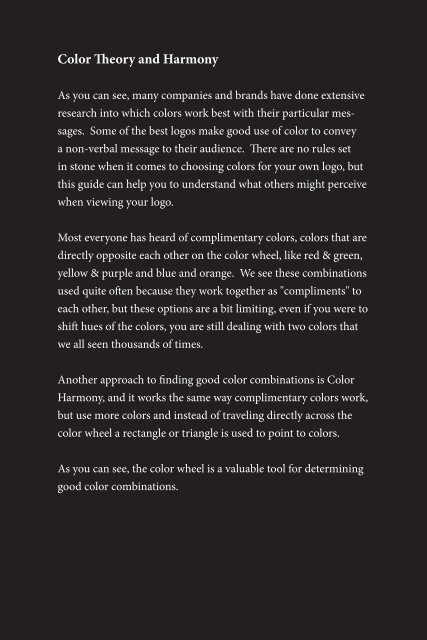Logo Design Book 2018
Create successful ePaper yourself
Turn your PDF publications into a flip-book with our unique Google optimized e-Paper software.
Color Theory and Harmony<br />
As you can see, many companies and brands have done extensive<br />
research into which colors work best with their particular messages.<br />
Some of the best logos make good use of color to convey<br />
a non-verbal message to their audience. There are no rules set<br />
in stone when it comes to choosing colors for your own logo, but<br />
this guide can help you to understand what others might perceive<br />
when viewing your logo.<br />
This is a basic color wheel showing<br />
primary, secondary and tertiary<br />
colors and you can get some great<br />
color combinations from this wheel.<br />
There are more complex color<br />
wheels that offer more shades of<br />
these basic colors.<br />
Most everyone has heard of complimentary colors, colors that are<br />
directly opposite each other on the color wheel, like red & green,<br />
yellow & purple and blue and orange. We see these combinations<br />
used quite often because they work together as "compliments" to<br />
each other, but these options are a bit limiting, even if you were to<br />
shift hues of the colors, you are still dealing with two colors that<br />
we all seen thousands of times.<br />
Another approach to finding good color combinations is Color<br />
Harmony, and it works the same way complimentary colors work,<br />
but use more colors and instead of traveling directly across the<br />
color wheel a rectangle or triangle is used to point to colors.<br />
As you can see, the color wheel is a valuable tool for determining<br />
good color combinations.


